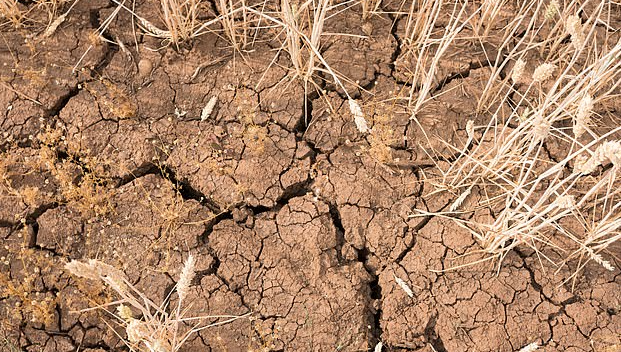![]()
…Subjected to annual loss of over US$57,000 due to deteriorating agricultural land
Lesotho’s agriculture and water sectors are under severe threat from climate change, according to the recently published Technology Needs Assessment (TNA) for Climate Change Adaptation in Agriculture and Water report.
The report, which assesses the country’s vulnerabilities and proposes technological interventions, warns of dwindling water resources, declining crop yields, and worsening soil degradation that threaten the nation’s food security.
Commissioned by the Government of Lesotho, the report highlights the urgent need for technological interventions to build resilience in these critical sectors.
The report, produced with support from the United Nations Environment Programme (UNEP) and the Global Environment Facility (GEF), provides a stark warning from climate change amplifying food production challenges in Lesotho, farmers’ struggles due to erratic rainfall, extended droughts, and soil degradation, to the hardened agriculture atmosphere in growing staple crops like maize, sorghum, and beans.
The report indicates that over the last few decades, the country has experienced an increase in magnitude of climate-induced hazards such as droughts, floods, heavy snowfall and extreme temperatures, noting these adversities tremendously impact sustainable livelihoods, security and well-being of society and contribute to increased incidences of poverty and undue pressures on social services.
It signalled that although Lesotho is an insignificant contributor to global greenhouse gas (GHG) emissions, it is among the countries that are and will continue to be severely impacted by climate change.
It points further that the country has thus committed itself to developing, adopting and implementing policies and measures that will assist it to adapt and increase its resilience to the adverse impacts of climate change, however, the slow technological mobilisation coupled with inadequate knowledge transfer and limited financial capacity, exacerbate systemic failures in addressing key drivers of climate vulnerability and inaction.
The crisis could not come at a worse time, as over 700,000 Basotho are already food insecure, with agriculture remaining the primary source of livelihood for rural communities.
Despite these worsening conditions, the Ministry of Agriculture continues to operate without an increased budget, raising concerns about the government’s ability to address the crisis.
“Lesotho heavily relies on rain-fed crop production systems, especially cereal staple crops such as wheat, beans, sorghum, and maize. However, changing weather patterns, including irregular rainfall, frequent and prolonged droughts, pose a significant threat to water availability.”
The report highlights that Lesotho’s agricultural output is already in decline, with farmers struggling to cope with erratic rainfall and soil erosion.
“Shifts in temperature and precipitation patterns can result in reduced crop yields or outright crop failure. Lesotho’s agricultural sector heavily depends on rain-fed farming, making it highly susceptible to variations in rainfall. Rising temperatures and unpredictable rainfall disrupt planting and harvesting schedules, negatively impacting crop growth and quality.”
Water Scarcity and Soil Degradation: The Silent Killers of Agriculture
The report shared that water scarcity is one of the biggest threats to agriculture in Lesotho, warning that drought conditions will continue to worsen, exacerbating food production challenges.
“Reduced water availability hampers crop growth, livestock rearing, and overall agricultural productivity. Farmers are forced to rely on limited water sources, impacting their ability to maintain stability of production systems and sustain food and nutrition security for their livelihoods,” it notes.
It indicated that the mountainous terrain of Lesotho, while scenic, makes the country highly vulnerable to soil erosion and land degradation, further complicating farming efforts.
“Climate change-induced factors, such as increased temperature, erratic rainfall, and extreme weather events, contribute to soil erosion and land degradation in Lesotho. Soil erosion reduces soil fertility, nutrient content, and water-holding capacity, making it difficult for farmers to cultivate crops successfully.”
“The economic cost of land degradation is staggering, with the country losing over US$57,000 per year due to deteriorating agricultural land,” the report revealed.
Livestock Under Threat from Climate Change
Beyond crops, the report declares that Lesotho’s livestock sector—which contributes 75% of the total agricultural output and 52% of agricultural GDP—is also experiencing major climate-related challenges.
“Increased temperatures, water scarcity, and the spread of diseases pose significant threats to livestock health and productivity. Heat stress reduces livestock productivity, and limited water availability impacts their overall well-being. Furthermore, changing climatic conditions facilitate the spread of vector-borne diseases, affecting animal health and increasing mortality rates,” it said.
In the week, farmers have already started reporting increased cases of livestock diseases due to changing weather patterns, and in the last year the diseases outbreak led to higher mortality rates and lower productivity especially with the wool and mohair sector, according to the sector’s associations.
How Can Lesotho Adapt? The Technology Roadmap
The TNA report identifies several key technologies that could help mitigate the impact of climate change on agriculture and water resources.
“The most urgent recommended adaptation technologies include;
- Decentralised Community-Run Early Warning Systems – To help farmers anticipate and prepare for extreme weather events.
- Rainwater Harvesting – Essential for irrigation and reducing reliance on erratic rainfall.
- Conservation Agriculture – Techniques like minimum tillage and soil conservation to protect farmlands.
And for water security, the report prioritises:
- Water Reuse Systems – Recycling water for irrigation and livestock.
- Groundwater Harvesting – Storing underground water for future agricultural use.
- Boreholes as a Drought Intervention – Expanding access to clean water sources in rural areas.
Can the Government Rise to the Challenge?
The TNA report makes it clear, “without immediate intervention, Lesotho’s food and water security will continue to deteriorate.”
Farmers across the country are already struggling with declining crop yields, worsening droughts, and the spread of livestock diseases.
“The vulnerabilities in Lesotho’s agricultural sector have far-reaching consequences for rural communities. Agriculture is the primary source of income and livelihood for over 80% of rural households. Reduced agricultural productivity can lead to severe food shortages, malnutrition, and increased poverty levels,” the report warned.




